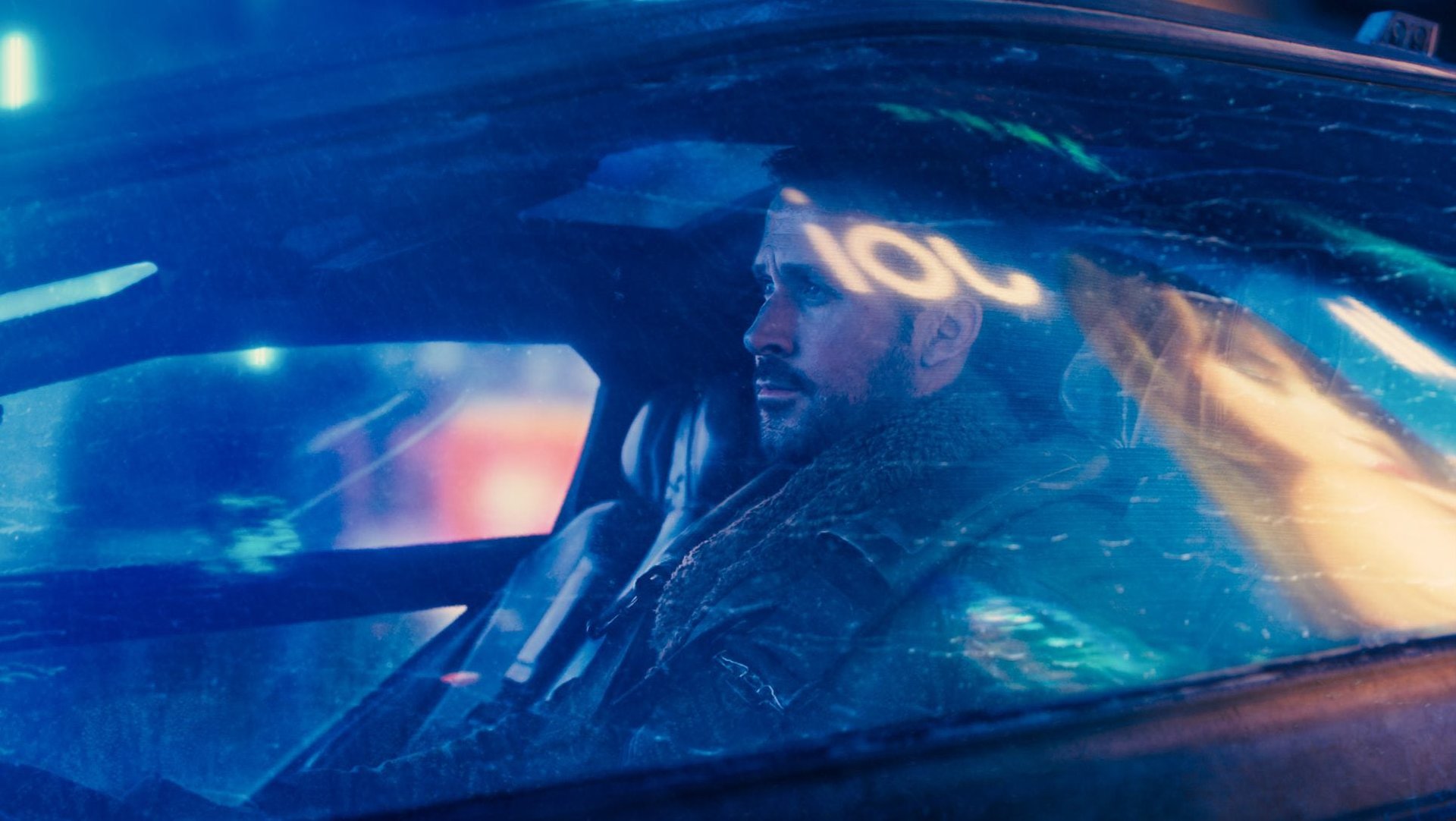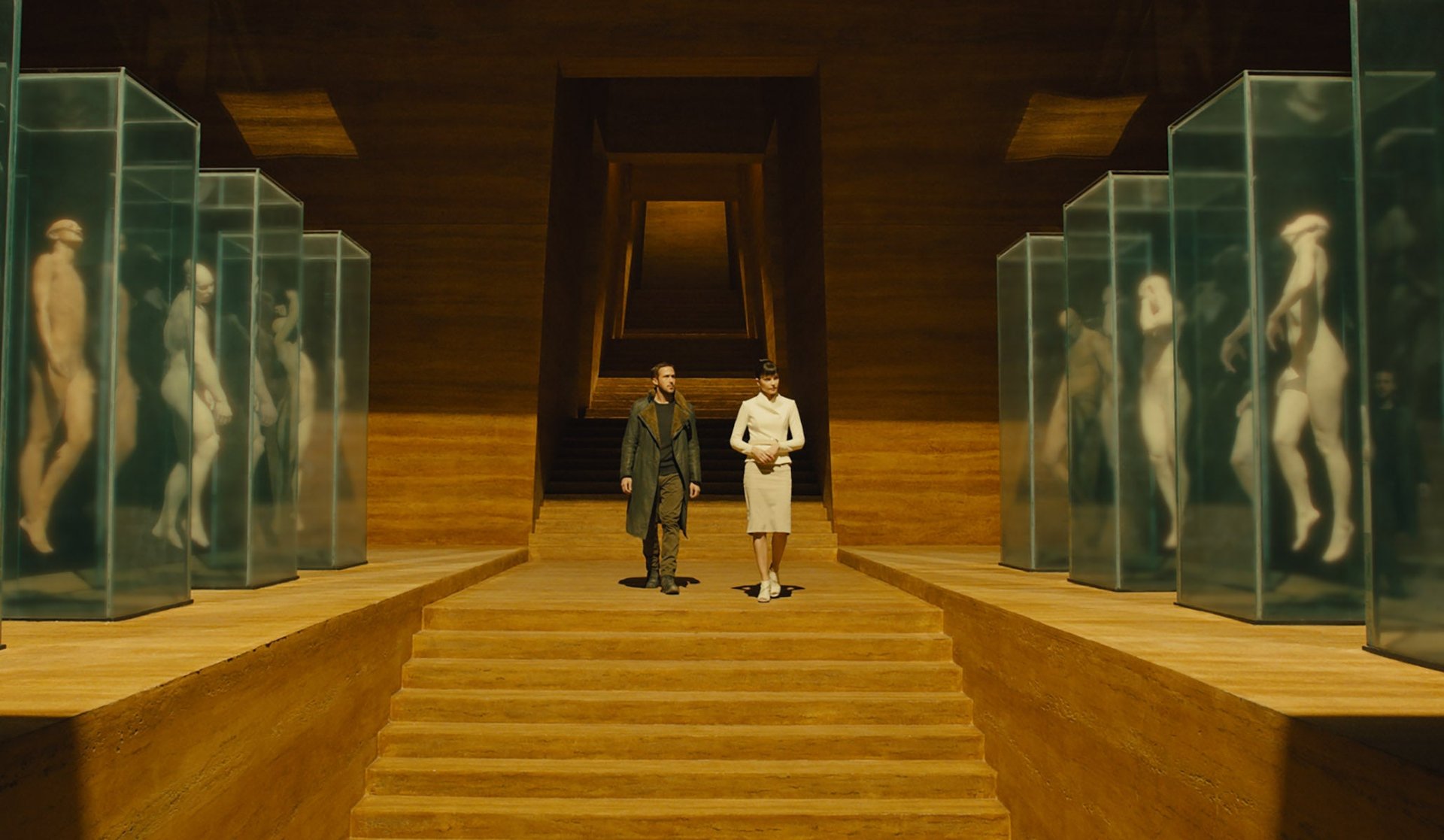How realistic is the incredible futuristic technology in “Blade Runner 2049”?
This article contains some minor spoilers for Blade Runner 2049.


This article contains some minor spoilers for Blade Runner 2049.
Blade Runner 2049, the sequel to Ridley Scott’s 1982 cult classic Blade Runner, is a thrilling, gorgeous film, out in theaters in the US today. As dark and dystopian as the futuristic world it depicts is, much of the technology featured in the film is remarkable and vividly realized.
But how realistic is all the cool tech in Blade Runner 2049? And how much of it might actually be a reality in a little over 30 years from now? Just how close are we to replicants and flying cars, anyway? Quartz entertainment reporter Adam Epstein (who’s seen the film) bombarded Quartz technology reporter Mike Murphy (who has not, and didn’t mind some minor spoilers) with questions about the gadgets and gizmos in Blade Runner 2049.
Adam Epstein, entertainment reporter: The backbone of the futuristic world depicted in Blade Runner 2049, replicants are a type of android virtually indistinguishable from humans. The only way to determine whether someone is a replicant or not is with a “Voight-Kampff machine,” a polygraph-like device that analyzes a test subject’s response to questions.
In Blade Runner 2049, the industrialist Niander Wallace (Jared Leto) has created a new model of replicant that will always obey orders, no matter the request. (Earlier models had gone rogue and were outlawed.)
So, question: Artificial intelligence is all the rage now. How close are we to a future where we have robots who look and act exactly like humans? And if that day ever comes, what are the chances we can control them?
Mike Murphy, technology reporter: On the physical side, we’re really not that far away. We’re already building robots that look like eerie, lifeless carbon copies of real people with synthetic materials that look and feel much like we do. But right now, their actions are jerky and their intellect is about as advanced as Siri’s. That will likely change in the future.
Many scientists and companies are working on building AI systems that can understand human emotion and respond with empathy. But while we might soon have computers that can pass some rudimentary Turing test, I think it’s going to be a long while before we have machines that fool us (and themselves!) so perfectly into believing that they are human beings like we are—maybe around the time this movie is set, at the very earliest. But when that day comes, it’s going to be hard to control things that act like us and know our weaknesses and how to exploit them.

Adam: Scary. Here’s something a little more…inspiring? (Spoilers ahead.) In the film, a replicant becomes pregnant and gives birth to a child. That’s not actually a thing, right? Will we soon have androids delivering our babies for us? Is it possible to replicate the human reproductive system with technology? And will a human and a robot, or even two robots, ever procreate?
Mike: We already produce babies in test tubes, so I guess that’s not that much of logical stretch. But I can’t imagine a system that’s shaped like a person that would deliver a child for us. Some other system specifically designed for that purpose, and no other, would be more scalable.
Perhaps two robots could get together to make a third. They’d have to do what we do, accumulating resources from somewhere else to make that third being (like eating food when pregnant). But, again, something like a factory line might be a little easier.

Adam: K’s primary means of transportation in the film is a “spinner,” a flying three-wheeled police vehicle that can take off and land vertically. Blade Runner is far from the only sci-fi universe to imagine flying cars—they were a staple of The Jetsons—but the ones in the film look and feel lived-in and rugged, making it easy for us to imagine that they’re the transportation of choice in the future (at least, among those who can afford them).
I know the history of legitimate attempts to build a flying car is long and storied. Will we ever get to a point of mass production? And is K’s police cruiser, which can hover like a helicopter and zoom around like a fighter jet, a scientific possibility? I imagine those physics haven’t quite been worked out yet.
Mike: Many will have you believe that we’re on the cusp of a flying-car revolution. I don’t buy it. All the startups right now are basically trying to strap more propellers on a helicopter and call it a flying car. When I think of a flying car, I think of Back to the Future II or the original Blade Runner. We do have a few jets right now that can take off and land vertically, but those cost like $100 million each to make today. I do think we’ll get to a point eventually where flying machines like this are available to anyone, but perhaps a little longer than 30 years into the future. We need to solve self-driving earthbound cars first!
Adam: K’s spinner sports a detachable drone, driven by voice command, that can survey an area and scan for pretty much anything. (Spoilers ahead.) Its coolest application in the film is when K gets it to map the subterranean roots of the tree on Sapper Morton’s (Dave Bautista) farm, where he finds the buried remains of a pregnant replicant.
First things first: Are there drones today with voice command? If not, then when will there be? And can they see through the ground from up above? To a novice like me, this one sounds pretty feasible.
Mike: I hadn’t thought until you asked, and now I’m surprised to learn we don’t have any yet! The technology definitely exists: All new GoPro cameras can be voice-controlled, and we have a range of voice assistants that have become popular in recent years that can do things like take a decent picture on command. And new drones from DJI can be controlled with simple hand gestures, which work pretty well. So I can see this happening pretty soon.
A bunch of companies are also working on drones that can be deployed from cars, so that tech will be here soon too. There are already drones that have infrared sensors to check on the health of crops as they fly overhead, so that wouldn’t be much of a stretch either. We’ve been able to map root systems with ground-penetrating radar for years.

Adam: Plenty of other films, like Her, have explored this question of human-to-AI romantic relationships, but the portrayal of K’s AI girlfriend Joi in Blade Runner 2049 (Ana de Armas) added a new wrinkle to the equation. In addition to being a seemingly sentient person, Joi can be projected into three-dimensional space (as a hologram) and interact with a real person in the room.
And with the help of a small device called an “emanator,” she can literally materialize as a corporeal form, able to touch and feel things in the real world. The emanator allows her to physically “be” anywhere where it’s also present.
Given the emergence of cloud-based voice services like Amazon’s Alexa, it seems like we’re pretty close to a world where you can have your own virtual companion with his or her own personality. But projecting that person or thing—whatever you want to call it—into our physical world felt super far-fetched to me, even for 30 years from now.
Mike: We have scores of people working on building personalities for bots; that will come soon. But actually giving them some sort of corporeal being seems…difficult, to say the least. I can’t really see something like that existing unless through some sort of augmented reality lens, but in that case, the AI wouldn’t really be there. You can’t really make something solid out of light.
Adam: Neither physics nor chemistry was ever my strength. (The fact that I don’t know if this is a question of physics or chemistry is all you need to know.) So let’s talk about the brain a bit. I know we can already discern a lot about what a person is thinking just by looking at brain waves. But will we ever be able to see someone else’s memories? In the film, a “memory designer” can not only create memories that are then implanted into replicants’ brains, but she can also use a microscope-like device to “see” a replicant’s memory when he simply thinks of it in his head.
Mike: This feels ripped from an episode of Black Mirror or Total Recall! The Pentagon is actually working on technology to restore memories in people who have experienced traumatic head injuries, so I can see a time when we understand how memories are stored—and recalled—far better than we do now. But visualizing those for someone else to see, and editing them, seems like it would require a level of understanding of how the brain works that we are very, very far from.
Some people ardently believe we’re going to be able to export our consciousnesses to the cloud soon, so perhaps it’ll just be like pressing “copy + paste” on a memory in the future.

Adam: The replicant-creating industrialist Niander Wallace (Jared Leto) is blind in the film, but he uses an army of tiny, hovering, rock-like cameras as his eyes. When he inserts some sort of device into his neck just below his ear, he can control these camera things as they ostensibly transmit a recording of the world directly to his brain. Did Blade Runner 2049 just cure blindness?
Mike: Eyes are an extension of the brain, so if we can input visual information to the brain through some other way, I can see that being a possibility. This is something that big tech is actually thinking about: Microsoft is working on technology similar to this, as are some startups. I can definitely see this being possible in the not-too-distant future, but maybe without the flying tiny rocks part.